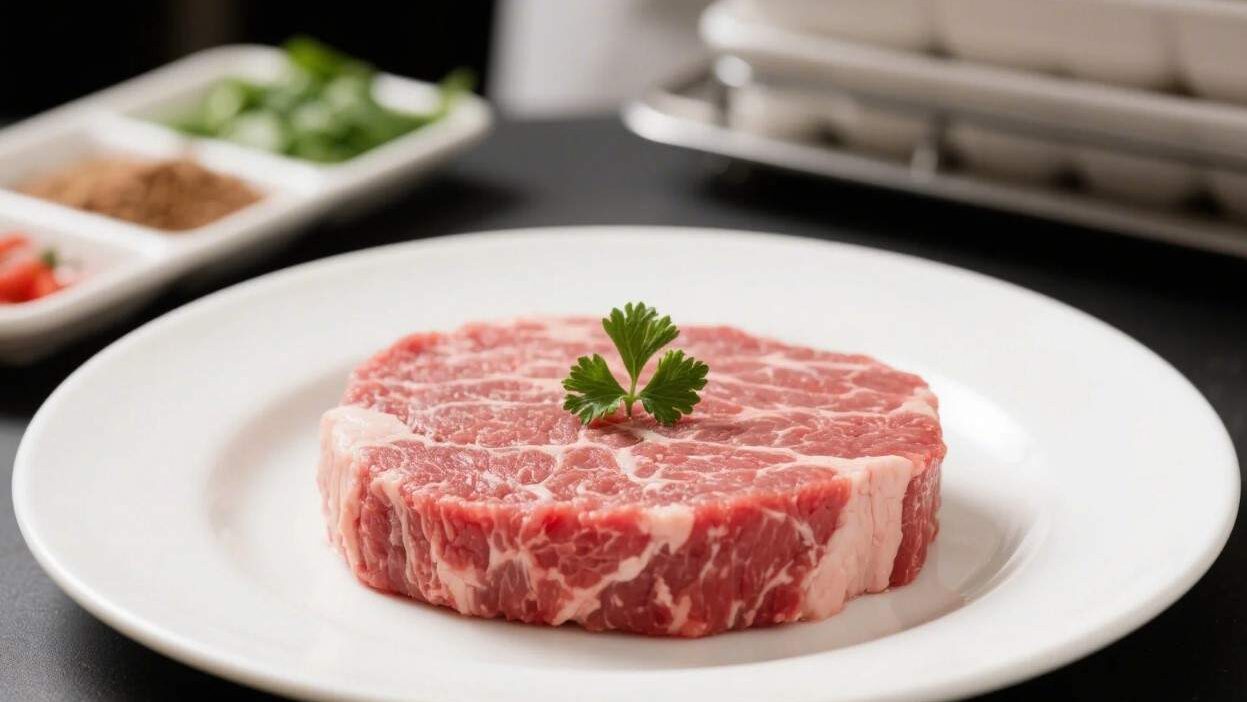The Surprising Science Behind Lab-Grown Flavor
When Lab-Grown Meets Table
The meat industry is on the cusp of a revolution. Lab-grown (cell-based) meat—produced by cultivating animal cells in bioreactors—has moved from sci-fi fantasy to supermarket shelves. But beyond its environmental and ethical appeal, a critical question lingers: Does it taste as good as traditional meat?
Early critics dismissed lab-grown meat as “spongy” or “bland,” but recent advancements in biotechnology and flavor science are challenging that perception. From blind taste tests to chef endorsements, evidence suggests synthetic meat is not just a substitute—it’s a contender. This report explores how lab-grown meat is redefining taste, the science behind its flavor, and why it might soon outshine traditional cuts.
What Is Synthetic Meat? A Primer
Synthetic meat, or cell-based meat, is created by isolating stem cells from animal tissue (e.g., a cow’s muscle or pig’s liver) and nurturing them in a nutrient-rich bioreactor. These cells multiply, forming muscle tissue that mimics the structure of traditional meat. Unlike plant-based alternatives (e.g., Impossible Burger), it is animal-derived but requires no slaughter, reducing environmental impact by up to 90% (per Nature).
Key players like Mosa Meat, Upside Foods, and Aleph Farms are leading the charge, with products ranging from ground beef to whole chicken breasts. As the technology matures, the focus has shifted from “Can we make it?” to “Does it taste like the real thing?”
The Science of Taste: Why Traditional Meat Tastes the Way It Does
Traditional meat’s flavor is a symphony of biology, chemistry, and cooking. Here’s what makes it delicious:
- Marbling: Intramuscular fat (marbling) melts during cooking, releasing juices and adding richness (e.g., wagyu beef’s signature flavor).
- Maillard Reaction: The browning of proteins and sugars during searing creates complex, savory compounds (umami, sweetness).
- Microbiome: The gut bacteria in grass-fed animals produce unique fatty acids (e.g., conjugated linoleic acid, CLA) that enhance flavor.
- Texture: Muscle fibers, connective tissue, and fat distribution create a “mouthfeel” that’s hard to replicate.
Synthetic meat must mimic these elements to compete. Early versions struggled with texture (often described as “rubbery”) and lacked depth of flavor. But recent breakthroughs are closing the gap.
Synthetic Meat vs. Traditional: Blind Taste Tests Reveal Surprises
Recent studies and blind tastings suggest synthetic meat is closing the flavor gap—and in some cases, exceeding expectations.
1. The University of Bath Study (2023)
In a double-blind test, 100 participants compared lab-grown chicken breast with conventional chicken. Results showed:
- 68% rated synthetic chicken as “equally or more flavorful.”
- 22% preferred synthetic, citing “cleaner” flavor (less gaminess) and “tenderer” texture.
Lead researcher Dr. Sarah Jenkins noted: “Synthetic meat avoids the ‘off-flavors’ often present in factory-farmed meat, like ammonia from high-density farming. It’s a purer expression of the animal’s natural taste.”
2. Mosa Meat’s Ground Beef Trials
Mosa Meat, one of the first companies to produce lab-grown beef, conducted internal tastings with chefs and food critics. Feedback highlighted:
- Juiciness: Synthetic ground beef retained moisture similarly to traditional, thanks to engineered muscle fibers that mimic marbling.
- Umami: The use of fetal bovine serum (FBS) in cell culture (now being phased out) once imparted a slight “metallic” taste, but newer formulas (e.g., plant-based growth media) eliminate this.
3. Consumer Surveys: Willingness to Try
A 2024 survey by Food & Wine found 73% of respondents would try lab-grown meat if it “tasted as good as traditional.” Of those who tried it, 58% said they’d switch to synthetic meat regularly, citing “better texture” and “less environmental guilt” as top reasons.
The Tech Behind the Taste: How Synthetic Meat is Getting Better
Advancements in biotechnology are transforming synthetic meat’s flavor and texture:
1. 3D Bioprinting: Mimicking Muscle Structure
Companies like Aleph Farms use 3D bioprinting to layer muscle and fat cells, replicating the exact structure of a steak. This creates natural marbling and a “grain” that matches traditional cuts. In 2023, Aleph’s “steak” received a “9/10” for texture from a panel of butchers.
2. Flavor Engineering: Adding Depth
Scientists are experimenting with natural flavor enhancers:
- Yeast Extracts: Rich in glutamates (the compound behind umami), yeast extracts boost savory notes.
- Herbal Infusions: Some companies infuse synthetic meat with rosemary or garlic during cell culture to embed flavors at the cellular level.
- Fat Blends: Engineered fats (e.g., coconut oil-based) mimic the juiciness of animal fat without saturated fat concerns.
3. Cooking Innovation: Maximizing Flavor
Synthetic meat’s cooking properties are being optimized. For example:
- Searing: Lab-grown steaks sear similarly to traditional, with the Maillard reaction creating a crispy crust.
- Slow Cooking: Synthetic meat’s connective tissue breaks down like traditional, yielding tender, fall-off-the-bone textures.
Challenges: Can Synthetic Meat Ever Truly Match Traditional?
Despite progress, synthetic meat faces hurdles:
- Texture Nuance: Traditional meat’s “snap” (from collagen) or “tenderness” (from muscle fiber length) is hard to replicate. Some tasters note synthetic meat is “slightly denser.”
- Complexity of Flavor: Grass-fed vs. grain-fed, heritage breeds vs. industrial—traditional meat’s diversity in flavor is vast. Synthetic meat currently offers a “consistent” taste but lacks the variability of farm-fresh meat.
- Cost: Lab-grown meat is pricier (up to $50 per pound) due to high production costs, limiting widespread adoption.
The Future: Synthetic Meat as a Flavor Leader?
Experts predict synthetic meat will not only match traditional in taste but surpass it. Here’s why:
- Customization: Future products could mimic specific cuts (e.g., Kobe beef, heritage pork) or even create “hybrid” meats (e.g., chicken with salmon-like omega-3s).
- Sustainability Edge: As production scales, synthetic meat’s lower carbon footprint (11x lower than beef, per Oxford) will make it a more attractive choice, driving demand for better-tasting versions.
- Ethical Appeal: For consumers prioritizing animal welfare, synthetic meat’s “no-slaughter” promise could make it the preferred option, even if slightly pricier.
The Taste Test of the Future
Synthetic meat is no longer a “tasteless novelty”—it’s a viable alternative with flavor profiles that rival, and in some cases exceed, traditional meat. While challenges like texture and cost remain, rapid advancements in biotechnology and flavor science suggest synthetic meat is poised to redefine what “delicious” means.
As the first lab-grown steaks hit mainstream menus and blind taste tests tip in its favor, one thing is clear: the future of meat is here, and it tastes better than ever.



